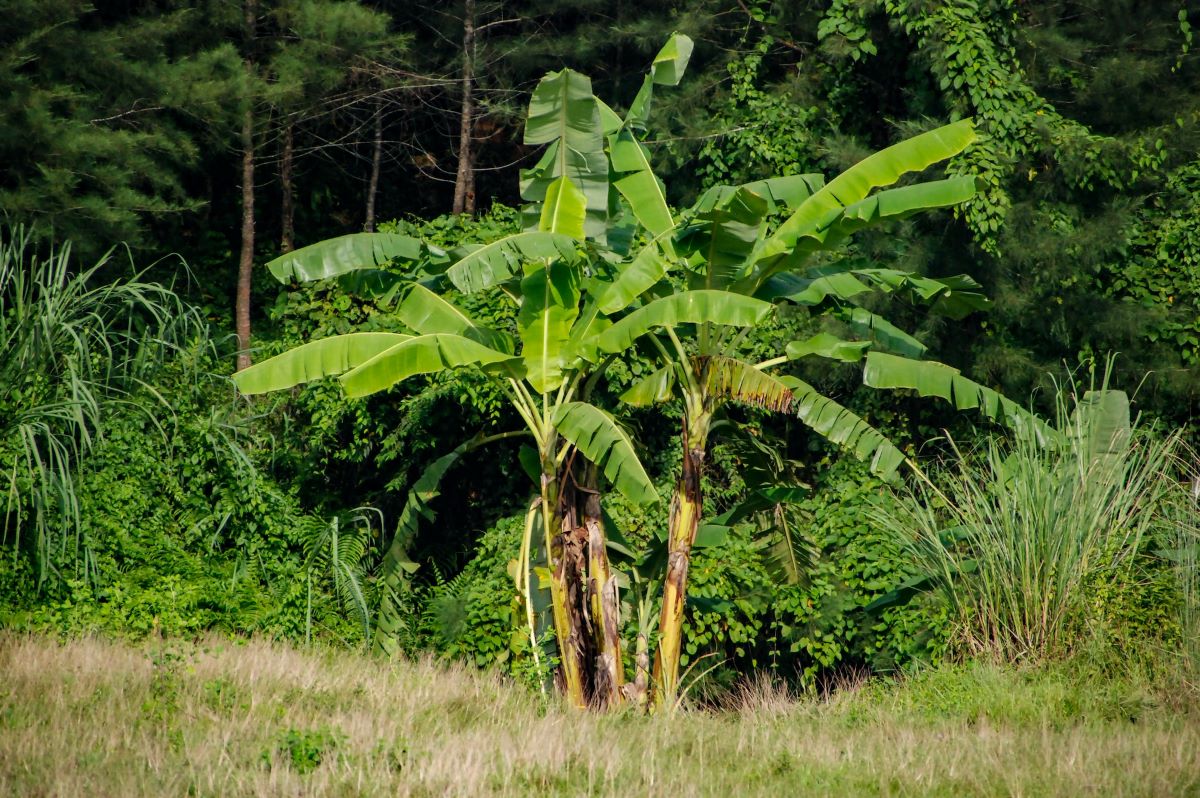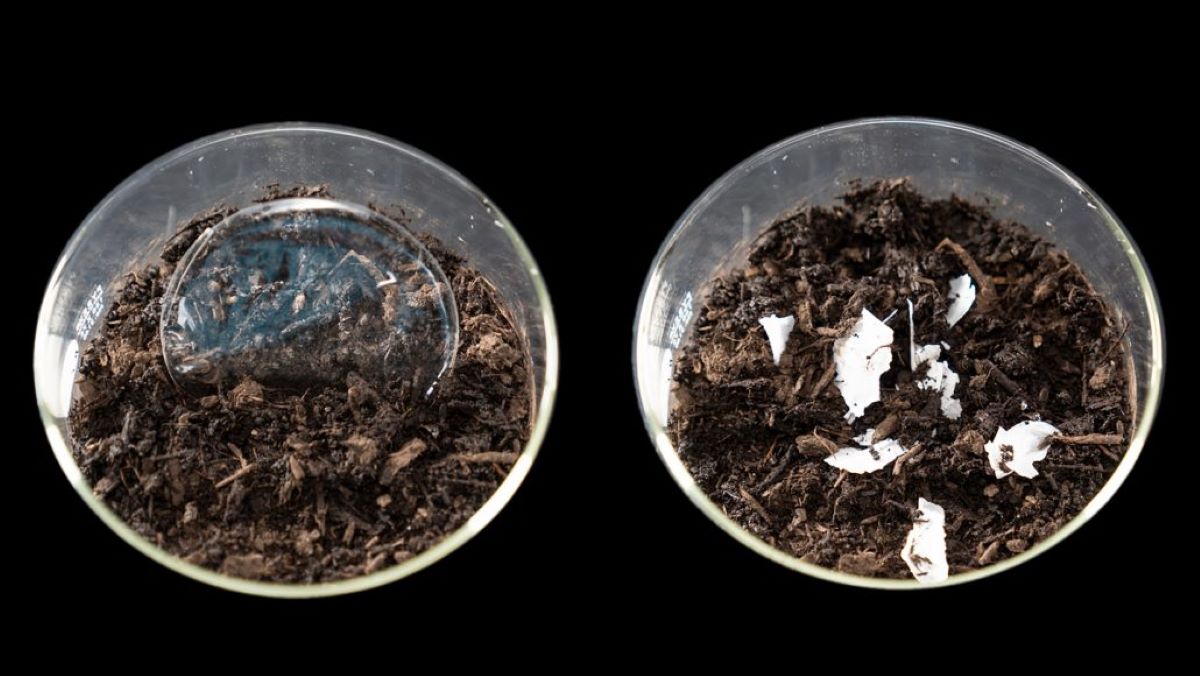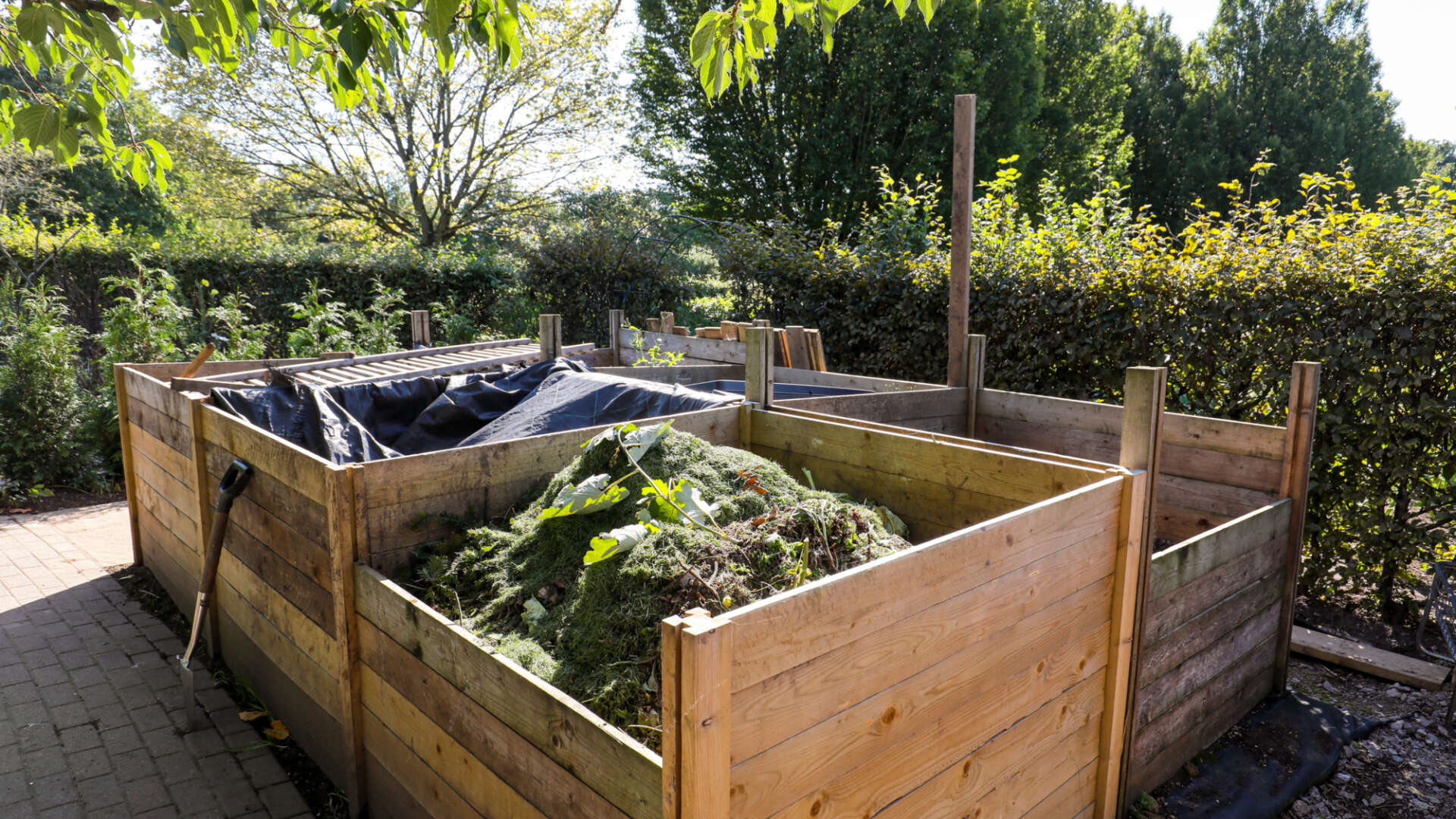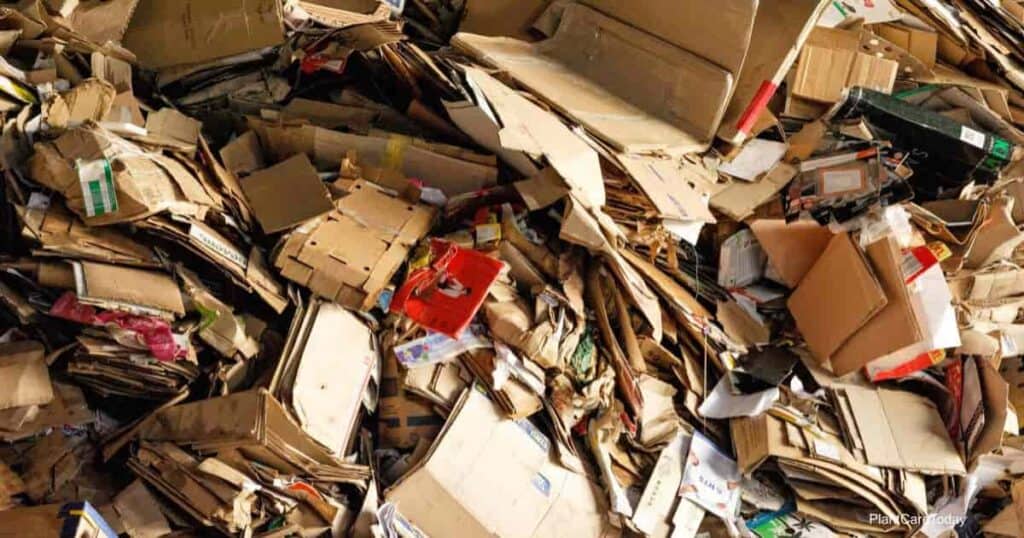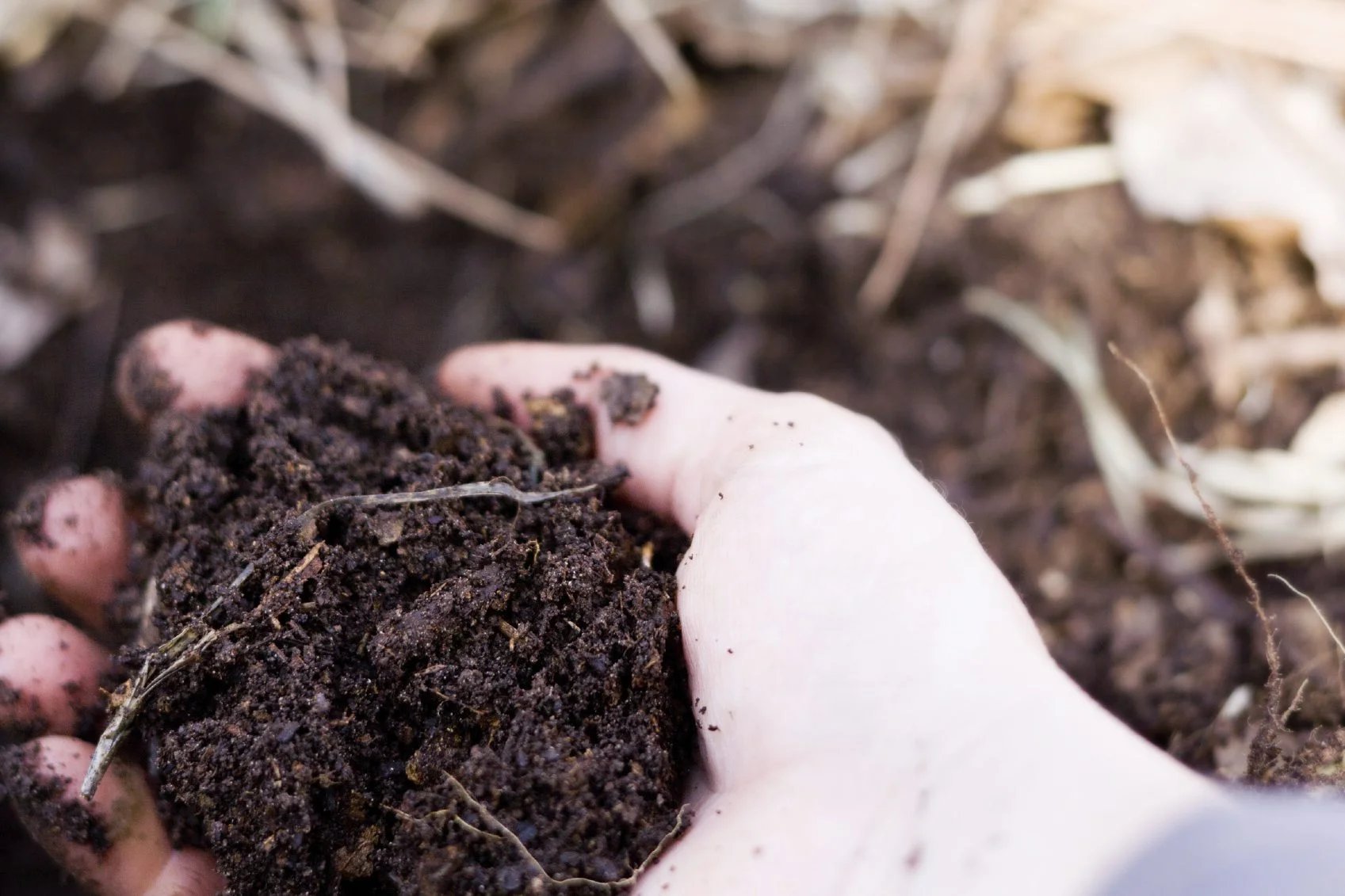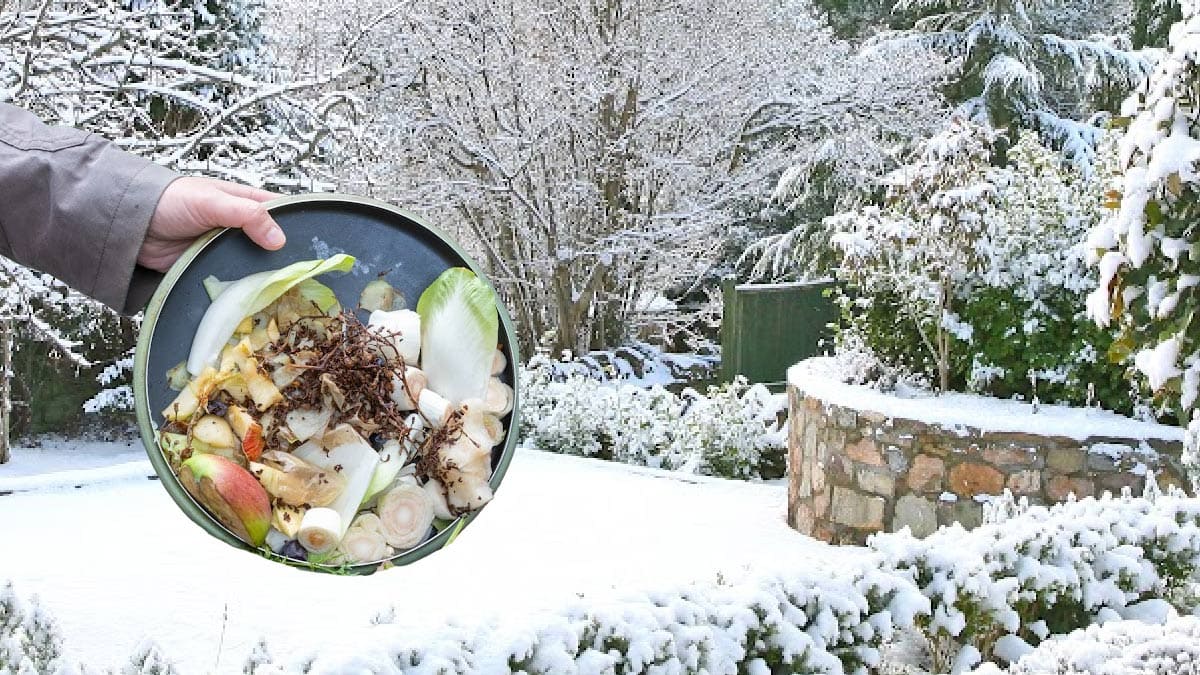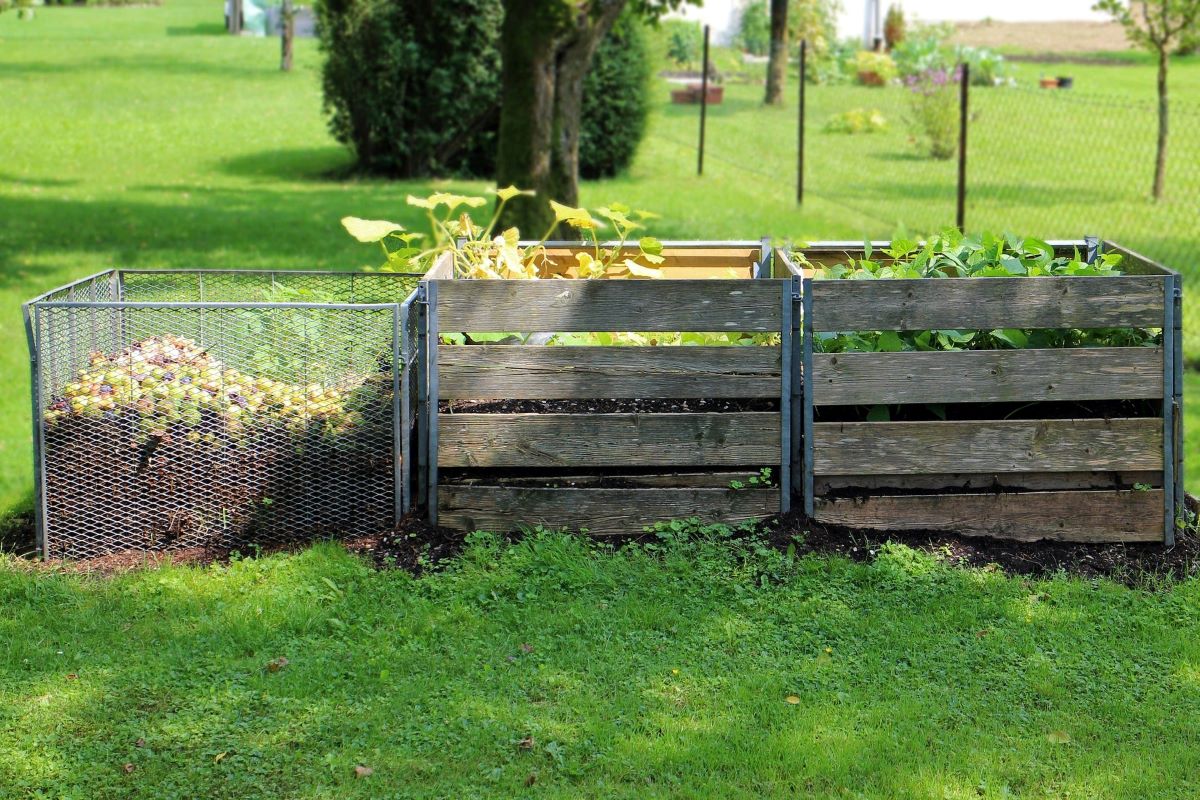Home>Gardening Techniques>DIY Projects>How To Compost Banana Peels


DIY Projects
How To Compost Banana Peels
Modified: February 9, 2024
Learn how to compost banana peels in your DIY projects. Turn waste into nutrient-rich soil and create a sustainable garden.
(Many of the links in this article redirect to a specific reviewed product. Your purchase of these products through affiliate links helps to generate commission for Chicagolandgardening.com, at no extra cost. Learn more)
Table of Contents
Introduction
Welcome to the world of DIY composting! If you’re looking for an effective and sustainable way to reduce waste and give your plants a natural boost, composting banana peels is a fantastic option. Banana peels are rich in nutrients like potassium, phosphorus, and calcium, which can greatly benefit your garden and indoor plants.
Composting banana peels not only helps you make use of kitchen waste but also contributes to the overall health of your soil. By adding banana peels to your compost pile, you’re creating a nutrient-rich environment that promotes the growth of beneficial bacteria and organisms, enhancing the fertility and moisture retention of your soil.
More Info:
– Did you know that banana peels also act as a natural pest repellent? They contain compounds like tannins and potassium that repel pests such as aphids and fruit flies, potentially reducing the need for harmful chemical pesticides in your garden.
– If you don’t have a garden, don’t worry! You can still compost banana peels and use the resulting nutrient-rich compost to feed your houseplants or donate it to community gardens.
In this guide, we will take you through the step-by-step process of composting banana peels, from collection to harvest. So, let’s dive in and learn how to turn those seemingly worthless banana peels into black gold for your plants!
Why Compost Banana Peels?
Banana peels are one of the most commonly discarded kitchen waste items, but they actually hold significant value when it comes to composting. Here are a few reasons why composting banana peels is beneficial:
- Nutrient-rich: Banana peels are packed with essential nutrients, including potassium, phosphorus, and calcium. As these peels break down during the composting process, these nutrients are released into the soil, providing valuable nourishment to your plants.
- Better soil fertility: Adding banana peels to your compost pile improves the overall fertility of your soil. The nutrients found in the peels help to replenish the soil’s nutrient content, promoting healthier plant growth and stronger root systems.
- Moisture retention: Banana peels have a high water content, which makes them great for retaining moisture in the compost pile. This can be especially beneficial in dry climates or during periods of drought, as it helps to keep your compost moist and promotes the breakdown of organic matter.
- Enhanced microbial activity: Composting banana peels encourages the growth of beneficial microorganisms in the soil. These microorganisms break down organic matter, improving soil structure and nutrient availability for plants.
- Eco-friendly solution: Composting banana peels is an environmentally friendly way to reduce kitchen waste. Instead of sending these peels to landfills, where they contribute to methane gas production, you can recycle them and create a valuable resource for your garden.
By composting banana peels, you not only divert waste from the landfill but also contribute to a more sustainable and organic gardening practice. So, don’t toss those banana peels in the trash – give them a second life by incorporating them into your compost pile!
What You’ll Need
Before you start composting banana peels, gather the following materials:
- Compost bin or pile: You’ll need a designated area or container for your compost pile. This can be a compost bin, a designated area in your garden, or a compost tumbler. Ensure that your compost bin has good airflow and drainage to facilitate the decomposition process.
- Banana peels: Collect banana peels from your kitchen. It’s best to use organic, pesticide-free bananas for composting, as you don’t want any chemicals or residues in your compost pile.
- Brown and green materials: Composting requires a balance of carbon-rich “brown” materials (such as dry leaves, straw, or shredded paper) and nitrogen-rich “green” materials (like grass clippings, kitchen scraps, or plant trimmings). These materials provide the necessary carbon-to-nitrogen ratio for efficient decomposition.
- Garden fork or shovel: A garden fork or shovel will be handy for turning and aerating your compost pile, ensuring proper decomposition and preventing odor or pest issues.
- Water: Composting requires moisture to break down organic matter effectively. Ensure you have a water source nearby to keep your compost pile adequately moist, like a water hose or watering can.
- Optional: Compost accelerator: If you want to speed up the composting process, you can use a compost accelerator or activator. These are commercially available products that contain beneficial bacteria, enzymes, and microorganisms to help break down organic matter more quickly.
Once you have these materials ready, you’re all set to begin composting your banana peels and creating nutrient-rich compost for your plants!
Step 1: Collecting Banana Peels
The first step in composting banana peels is to start collecting them from your kitchen. Here’s what you need to do:
- Save your banana peels: Whenever you consume bananas, instead of throwing away the peels, set them aside in a separate container. You can use a small bin, a compostable bag, or even a plastic bag with air holes to collect the peels.
- Store the peels properly: It’s important to store the banana peels properly to avoid odor or fruit fly problems. If possible, keep the container in your freezer. Freezing the peels not only prevents odor but also helps to break down the cell walls of the peels, making them easier to decompose during composting.
- Collect a sufficient amount: Aim to collect a good amount of banana peels before adding them to your compost pile. It’s recommended to have a mix of green and brown materials in your compost, so wait until you have a decent quantity of peels to add.
- Avoid contaminants: Ensure that the banana peels you collect are free from stickers, tape, or any other non-compostable materials. These contaminants can interfere with the composting process and should be removed before adding the peels to your pile.
Remember, you can collect banana peels over a period of time if you’re not generating enough in one go. Just make sure to store them properly to prevent any issues, and when you have enough, move on to the next step of preparing your compost pile.
Step 2: Preparing the Compost Bin
Now that you have collected a sufficient amount of banana peels, it’s time to prepare your compost bin for their addition. Here’s what you need to do:
- Choose a suitable location: Select a suitable location for your compost bin. It should be a level, well-drained area with good airflow. If you’re using a compost bin, make sure it has proper drainage holes to prevent excess moisture buildup.
- Set up your compost bin: If you’re using a compost bin, assemble it according to the manufacturer’s instructions. Ensure that it is sturdy and secure before proceeding.
- Start with a base layer: To promote proper aeration and drainage, start by adding a layer of course materials, such as twigs or small branches, at the bottom of your compost bin. This will allow for good airflow and prevent the compost from becoming compacted.
- Add a layer of brown materials: On top of the base layer, add a generous layer of carbon-rich “brown” materials, such as dry leaves, shredded paper, or straw. This will help create a balanced carbon-to-nitrogen ratio in your compost pile.
- Add a layer of green materials: Follow the layer of brown materials with a layer of nitrogen-rich “green” materials, such as grass clippings or other kitchen scraps. This will provide the necessary nitrogen to the composting process, aiding in the breakdown of organic matter.
- Repeat the layering process: Continue layering brown and green materials, alternating between the two, until you have a well-sized compost pile. Aim for a ratio of roughly three parts brown materials to one part green materials.
- Add water: Throughout the layering process, lightly moisten each layer with water. You want the compost pile to be consistently moist, similar to a damp sponge. This will aid in the decomposition process.
By properly preparing your compost bin, you create a suitable environment for the banana peels to decompose and transform into nutrient-rich compost. Once you have prepared the bin, you’re ready to add the collected banana peels and continue the composting process.
Step 3: Layering the Compost Bin
Now that your compost bin is ready, it’s time to start layering the materials. Properly layering the compost bin ensures a balanced decomposition process and helps create nutrient-rich compost. Here’s how to do it:
- Add a layer of banana peels: Start by adding a layer of banana peels to the compost bin. Spread them evenly, covering the area with a thick layer. Ensure that the peels are spread out to promote even decomposition.
- Add brown materials: On top of the banana peels, add a layer of carbon-rich “brown” materials, such as dry leaves, shredded paper, or straw. Aim for a layer that is roughly equal in thickness to the layer of banana peels.
- Add green materials: Follow the layer of brown materials with a layer of nitrogen-rich “green” materials, such as grass clippings, kitchen scraps, or plant trimmings. This helps provide the necessary nitrogen for the decomposition process.
- Continue layering: Repeat the layering process, alternating between layers of banana peels, brown materials, and green materials until you have used up all the collected banana peels and achieved the desired compost pile size. Make sure to maintain a ratio of roughly three parts carbon-rich materials to one part nitrogen-rich materials.
- Moisten each layer: As you layer the materials, moisten each layer lightly with water. The compost pile should have a moist, but not soggy, consistency similar to a damp sponge. This helps provide the necessary moisture for the composting process.
- Continue layering and watering: Repeat the process of layering banana peels, brown materials, and green materials until you have used all the collected peels and other organic matter. Ensure to water each layer lightly as you go.
By layering the materials in your compost bin, you create an ideal environment for the breakdown of organic matter, including the banana peels. The layering process helps facilitate decomposition and ensures a balanced carbon-to-nitrogen ratio for optimal composting.
Step 4: Adding Banana Peels to the Compost Bin
Now that your compost bin is prepped and layered, it’s time to add the collected banana peels. Adding banana peels to the compost bin is a simple process that contributes valuable nutrients to your compost. Here’s how to do it:
- Spread the peels evenly: Take the collected banana peels and spread them evenly over the top layer of the compost bin. Try to distribute them as evenly as possible to ensure proper decomposition.
- Avoid piling the peels: While it may be tempting to create a thick layer of banana peels, it’s important to avoid piling them up. Thick layers can impede airflow, causing the compost to become compacted. Instead, spread them out evenly to promote proper decomposition.
- Cover the peels with brown materials: After adding the banana peels, cover them with a layer of carbon-rich “brown” materials. This helps create a balanced carbon-to-nitrogen ratio and aids in the decomposition process. Aim for a layer similar in thickness to the layer of banana peels.
- Moisten the compost pile: Lightly moisten the compost pile after adding the banana peels and covering them with brown materials. This ensures proper moisture levels for the composting process, helping to break down the organic matter effectively.
- Repeat the layering process: Continue layering the compost bin with additional banana peels, brown materials, and green materials. Alternating layers ensures a well-mixed compost pile that promotes efficient decomposition. Remember to moisten each layer as you go.
- Cover the compost bin: Once you have added all the banana peels and achieved the desired compost pile size, cover the compost bin. This helps retain heat and moisture, accelerating the decomposition process.
Adding banana peels to the compost bin is a crucial step in utilizing their nutrients and promoting sustainable gardening practices. With the peels integrated into the compost pile, they will contribute to the formation of nutrient-rich compost, enriching your soil and benefiting your plants.
Step 5: Maintaining the Compost Pile
Once the banana peels and other organic matter are added to the compost bin, it’s important to maintain the compost pile to ensure proper decomposition. Here are some essential steps to follow:
- Aerate the compost pile: Regularly turn and aerate the compost pile using a garden fork or shovel. This helps introduce oxygen into the pile, which is essential for the breakdown of organic matter. Turning the pile every few weeks prevents it from becoming compacted and promotes faster decomposition.
- Monitor moisture levels: Check the moisture content of the compost pile regularly. It should have a moist, but not soggy, consistency. If the pile is too dry, lightly water it. If it’s too wet, add dry brown materials like straw or shredded paper to absorb excess moisture. Maintaining proper moisture levels helps the microorganisms in the compost pile break down the organic matter effectively.
- Manage the carbon-to-nitrogen ratio: Ensure that the compost pile maintains a balanced carbon-to-nitrogen (C:N) ratio. Too much nitrogen-rich material can make the pile smelly and slow down decomposition. If this happens, add more brown materials to balance the ratio. Aim for a C:N ratio of around 25-30 parts carbon to 1 part nitrogen.
- Watch for pests and odors: Keep an eye out for any signs of pest activity or unpleasant odors. Pests like fruit flies or rodents may be attracted to the compost pile if it contains food scraps other than banana peels. To deter pests, bury the food scraps deep within the compost pile or cover them with a layer of brown materials. If odors become strong or foul-smelling, it may indicate an imbalance in the compost pile, such as excess nitrogen. Add more brown materials to rectify the situation.
- Continue adding compostable materials: As you continue maintaining the compost pile, add additional compostable materials, such as kitchen scraps, yard waste, or shredded paper. Aim for a good mix of carbon-rich brown materials and nitrogen-rich green materials to maintain a healthy compost ecosystem.
By actively maintaining the compost pile, you create optimal conditions for the breakdown of organic matter, including the banana peels. Regularly tending to the compost pile ensures proper decomposition and results in nutrient-rich compost that will benefit your garden in the long run.
Step 6: Harvesting the Finished Compost
After patiently maintaining and nurturing your compost pile, it’s time to reap the rewards of your efforts by harvesting the finished compost. Here’s how to do it:
- Allow the compost to mature: Before harvesting the compost, allow it to mature for a sufficient period. The composting process typically takes several months to a year, depending on various factors such as temperature, moisture levels, and the materials used. Mature compost will have a dark, crumbly texture and an earthy smell.
- Stop adding new materials: Gradually cease adding new materials to the compost pile a few weeks before you plan to harvest. This gives any remaining organic matter the chance to decompose fully and ensures that you collect a uniform, well-composted end product.
- Sift or screen the compost: To separate any larger, uncomposted materials from the finished compost, you can sift it through a mesh screen or use a compost sifter. This step is optional but can result in a finer, more refined compost product.
- Collect the finished compost: Using a garden fork or shovel, carefully remove the finished compost from the bottom of the compost pile. Start scooping from the top layer, working your way down to the rich, dark compost at the bottom. Collect the compost in a wheelbarrow or container for further use.
- Use the compost: Your harvested compost is now ready to be used in various ways. Incorporate it into your garden beds to improve soil fertility and structure, mix it with potting soil for container gardening, or spread it as a topdressing around existing plants. The rich nutrients in the compost will nourish your plants and promote healthy growth.
- Store excess compost: If you have more compost than you currently need, store it in a covered container or pile for future use. Compost can be stored for months or even years, as long as it remains covered to prevent rainwater from leaching out the nutrients.
Harvesting the finished compost is a gratifying step in the composting process. It allows you to utilize the nutrient-rich product you’ve created and support the health and vitality of your garden.
Conclusion
Composting banana peels is a fantastic way to reduce kitchen waste, enrich your garden, and promote sustainable gardening practices. By following the step-by-step process outlined in this guide, you can turn those seemingly worthless banana peels into nutrient-rich compost for your plants.
We began by highlighting the benefits of composting banana peels, such as their high nutrient content, improvement of soil fertility, and promotion of beneficial microbial activity. Additionally, composting banana peels reduces waste, helps retain moisture, and acts as an eco-friendly solution for gardeners.
We then discussed the necessary materials needed, including a compost bin, banana peels, brown and green materials, a garden fork or shovel, and water. These materials provide the foundation for successful composting.
The step-by-step process covered in this guide takes you through collecting banana peels, preparing the compost bin, layering the compost bin, adding banana peels to the pile, maintaining the pile, and finally, harvesting the finished compost. Each step contributes to the overall success of the composting process.
By following these steps, you can create a nutrient-rich compost that supports the growth of healthy plants, improves soil quality, and reduces the amount of waste sent to landfills. Composting banana peels is a sustainable practice that not only benefits your garden but also contributes to a greener and more environmentally friendly lifestyle.
So, why waste those banana peels when you can put them to good use in the compost pile? Start composting your banana peels today and experience the joy of transforming kitchen waste into black gold for your plants.
